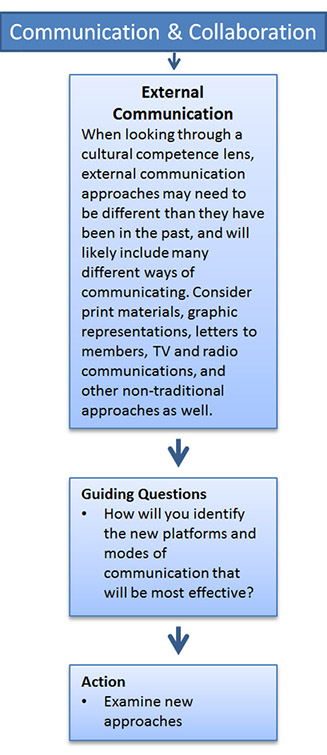Focused on three 21st Century learning skills from the 2009 IMLS publication Museums, Libraries and 21st Century Skills – Creativity and Innovation, Communication and Collaboration, and Global Awareness – this framework helps institutions advance their cultural competency. Find definitions, questions and actions for your organization to take here.
“All libraries and museums—and the people they serve—stand to benefit from becoming more intentional and purposeful about accommodating the lifelong learning needs of people in the 21st century, and doing this work collaboratively in alignment with community needs.
Given the accelerating economic, social, and educational changes of the 21st century, today’s libraries and museums face dramatic shifts in the populations they serve and the communities in which they operate.
At a time when increasingly advanced skills are required for success in life and work, people of all ages are seeking a diverse range of learning experiences to inspire, guide, and enhance their personal and professional lives. Libraries and museums can embrace this opportunity to build on past achievements and chart promising new directions. One of these critical new directions involves developing a comprehensive, purposeful approach around 21st century skills.”
Museums, Libraries and 21st Century Skills, IMLS, 2009.

Creativity & Innovation
Think creatively, work creatively with others, and implement innovations
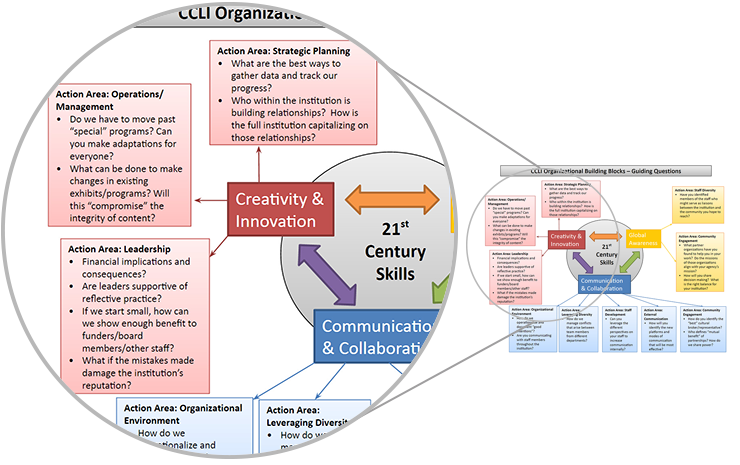
- Be open and responsive to new and diverse perspectives; incorporate group input and feedback into the work
- View failure as an opportunity to learn; understand that creativity and innovation is a long-term, cyclical process of small successes and frequent mistakes
also includes:
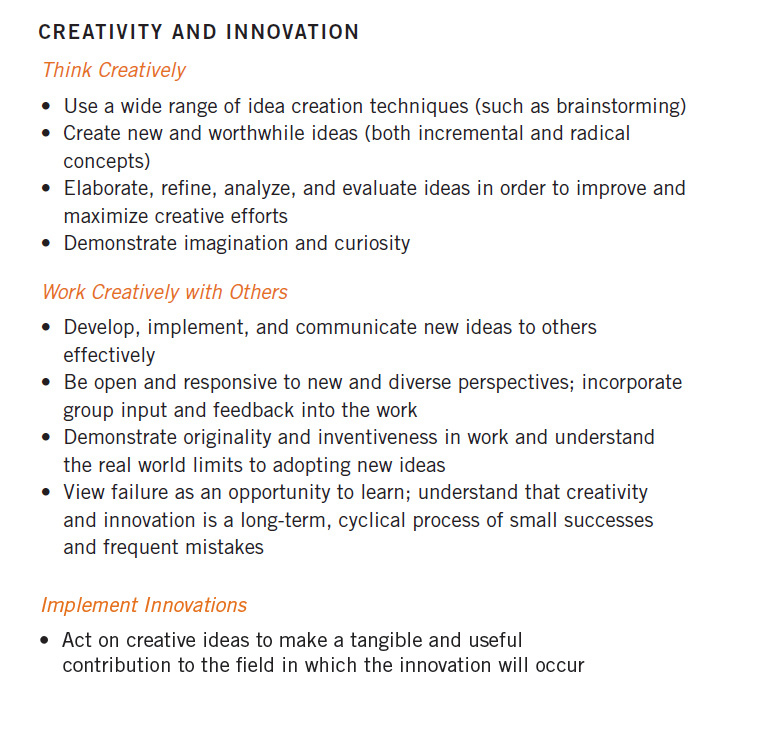
Creativity & Innovation points to these areas of focus:
Leadership
In this framework, leadership focuses on the behavior of leadership, which may be undertaken by many staff members within the institution, rather than through specific positions or power structures within the institution.
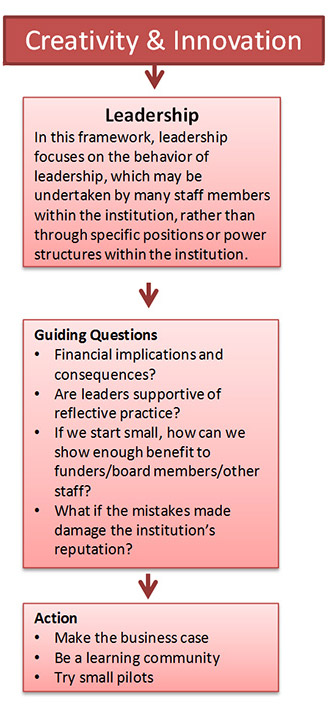
Strategic Planning
While strategic planning is often inwardly focused, strategic planning within a cultural competence framework focuses on creating, identifying, capitalizing on or leveraging relationships, both internally and externally.

Operations/Management
Operations and Management within a cultural competence framework refers to implementation of programs/exhibits/projects and suggests using inclusion as a frame for all institutional processes, considering doing things in a different way throughout the institution. It spans all departments, includes board, staff, and volunteers, and invests in people so that they are comfortable and confident.

Global Awareness

- Learn from and work collaboratively with individuals representing diverse cultures, religions, and lifestyles in a spirit of mutual respect and open dialogue in personal, work, and community contexts
- Understand other nations and cultures, including the use of non-English languages
- Use 21st century skills to understand and address global issues
Global Awareness points to these areas of focus:
Staff Diversity
In addition to considering a broad definition of diversity that encompasses ethnicity, age, geography, gender, sexual orientation, abilities, and many others, steps toward ensuring staff diversity should also consider a variety of experiences represented, a closer look at who is at the planning and decision making tables, and recruiting and hiring practices.

Community Engagement
Community can be defined very broadly in this instance—beyond ethnicity or geography. The work with community must always be responsive to examining assumptions and recognizing community needs.

Communication & Collaboration
Communicate clearly and collaborate with others

- Listen effectively to decipher meaning, including knowledge, values, attitudes, and intentions
- Demonstrate ability to work effectively and respectfully with diverse teams
also includes:

Communication & Collaboration points to these areas of focus:
Organizational Environment
This category refers to the processes and norms for how people within an organization communicate and what they value internally. The organizational environment incorporates multiple processes and considers the ways that different perspectives are represented.
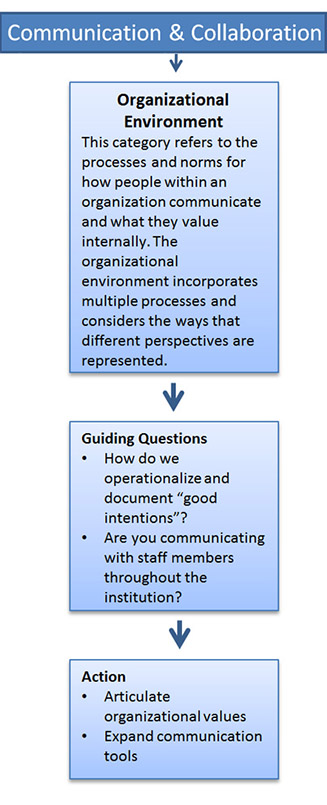
Leveraging Diversity
Within a cultural competence framework, it is important to consider a definition of diversity that is broader than what is often called diversity, but is actually ethnicity. Think also about diversity of age, departmental representation, skill sets and strengths, exposure to different content areas, personal experiences.

Community Engagement
Community can be defined very broadly in this instance—beyond ethnicity or geography. The work with community must always be responsive to examining assumptions and recognizing community needs.

Staff Development
Staff development in the context of Cultural Competence focuses on different perspectives in the organization, how these perspectives are communicated internally to others, and the capacity to create opportunities for staff to broaden their individual perceptions of diversity, and for the institution’s competence to bring multiple perspectives together.

External Communications
When looking through a cultural competence lens, external communication approaches may need to be different than they have been in the past, and will likely include many different ways of communicating. Consider print materials, graphic representations, letters to members, TV and radio communications, and other non-traditional approaches as well.
